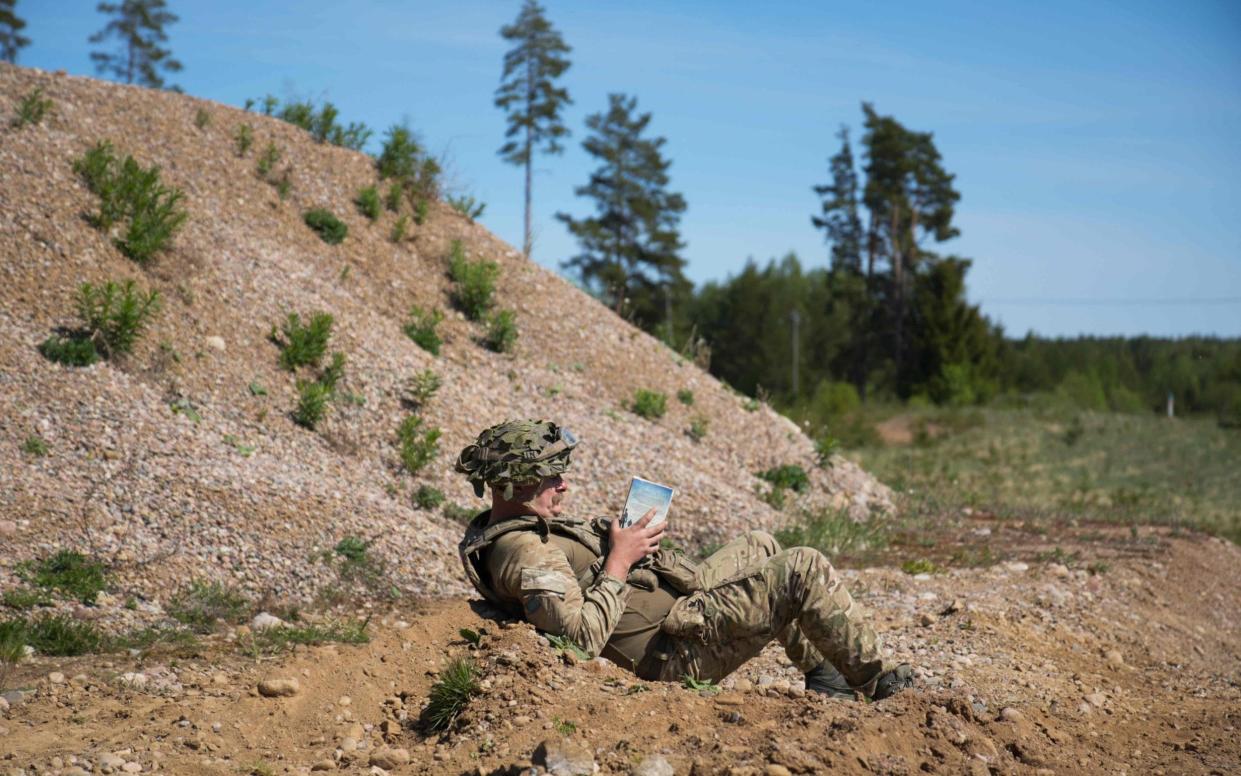While Putin gathers strength, Britain is disarming itself

- Oops!Something went wrong.Please try again later.
Joseph Stalin is famously said to have dismissed the Catholic Church by asking “The Pope? How many decisions has he?”. If his successor Vladimir Putin were to ask the same of Britain, the answer may soon be “none”.
At a time when Europe is locked in a major land war which has repeatedly raised the risk of Nato involvement, the British Government and its military chiefs could once again be poised to inflict irreparable cuts upon the Army.
We will soon see the much-anticipated refresh of the defence command paper. While the original is only two years old, it was a strategically incoherent mess. Placed within the context of the “Global Britain” agenda, it correctly labelled Russia as the greatest threat to our national security, and China and terrorism as important considerations.
But despite correctly identifying these risks, the substantive decisions in the review were to slash troop numbers to their lowest level since the early 1800s, cut main battle tanks by a third, and gamble on future technologies eventually bailing us out.
This decision to cut Army personnel by almost 10,000 – two brigades worth – means that Britain is currently unable to deploy an armoured warfighting division, a unit that has long been the backbone both of our conventional military deterrence, and of our commitment to ensuring European security through Nato.
Actually, this description undersells the damage. In the immediate aftermath of Russia’s reinvasion of eastern Ukraine last February, Nato Baltic members, rightly concerned about their own security and border, asked the countries contributing to the enhanced Forward Presence to bolster their commitments.
The UK duly answered, doubling the armoured infantry commitment for a period of three months and deploying an additional light-role infantry Battalion. This deployment lasted only six months, and has not been maintained. It appears that our armed forces can no longer sustain even one armoured infantry Brigade in a friendly allied country.
And what of the “future” technologies supposedly riding to the rescue? A few weeks after the beefed-up battlegroup returned from Estonia last autumn, the Army’s special operational trials unit was involved in trialling new unmanned aerial systems and robotics with US counterparts in California. A “live-fire demonstration” culminated with these systems all but grounded due to unforeseen wind.
So much for the so-called “force multiplier” technology, intended to do the work of battle-hardened soldiers. For the foreseeable future, battles will still be fought with tanks, shells, and men in boots; not lightweight systems unable to handle a temperate wind.
Now back to Whitehall. Despite the turmoil engulfing Europe, it has been suggested that, far from reversing previous cuts, the Government may in fact reduce Army personnel further. While no official statement has been made, rumours are flying that numbers could fall as low as 60-65,000 in the pursuit of cost savings.
If true, this would pass beyond being merely strategically incoherent into dangerously negligent. As events in Ukraine have shown, the prudent course of action is exactly the opposite. Far from cutting numbers, or allowing them to remain steady, we should be looking to undo the terrible damage of the Government’s ill-advised penny-pinching.
As events in Ukraine have shown over and over again, quantity retains a quality of its very own. If Ministers fail to act now and secure the future of the Army, then they will have failed in their first line of duty, which remains the defence of this nation and of our allies.
Robert Clark is director of the Defence and Security Unit at Civitas. Prior to this he served in the British Army.

